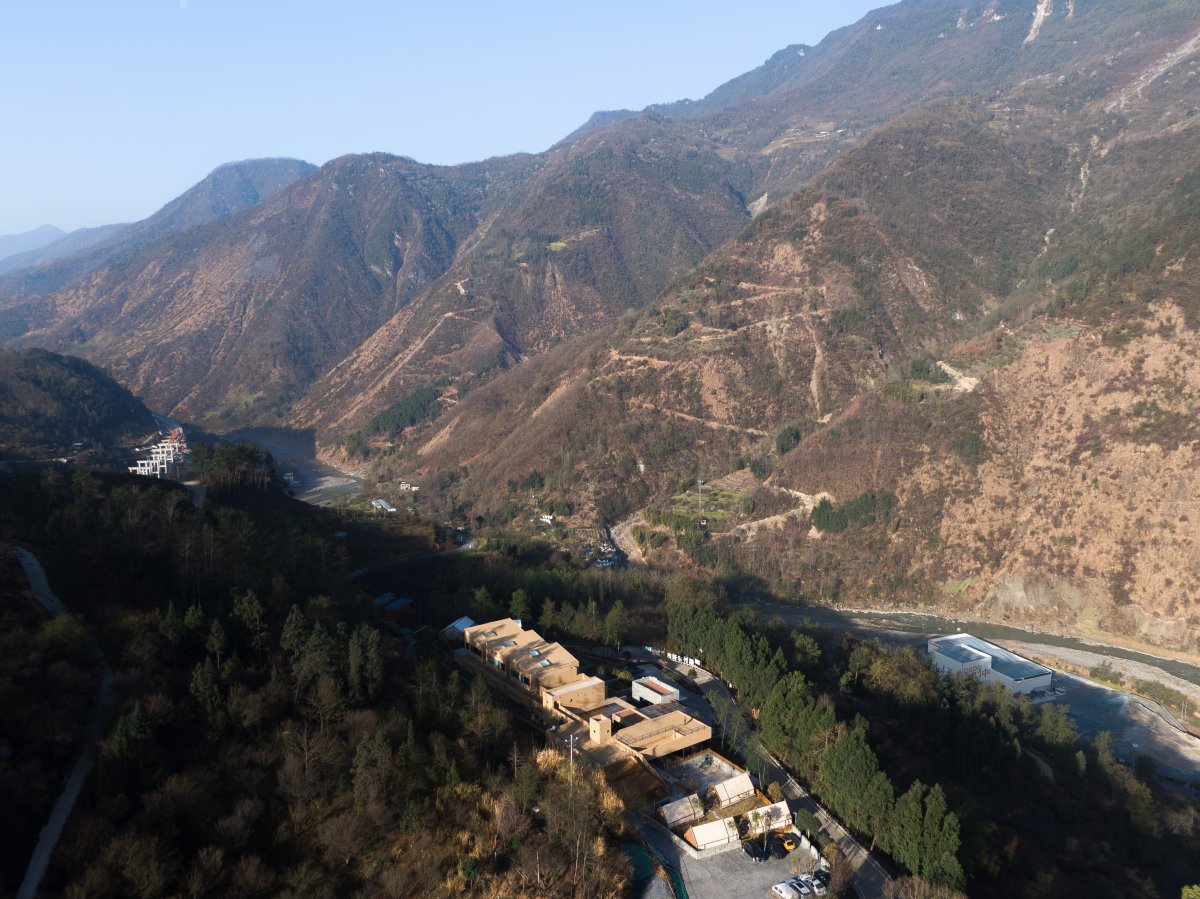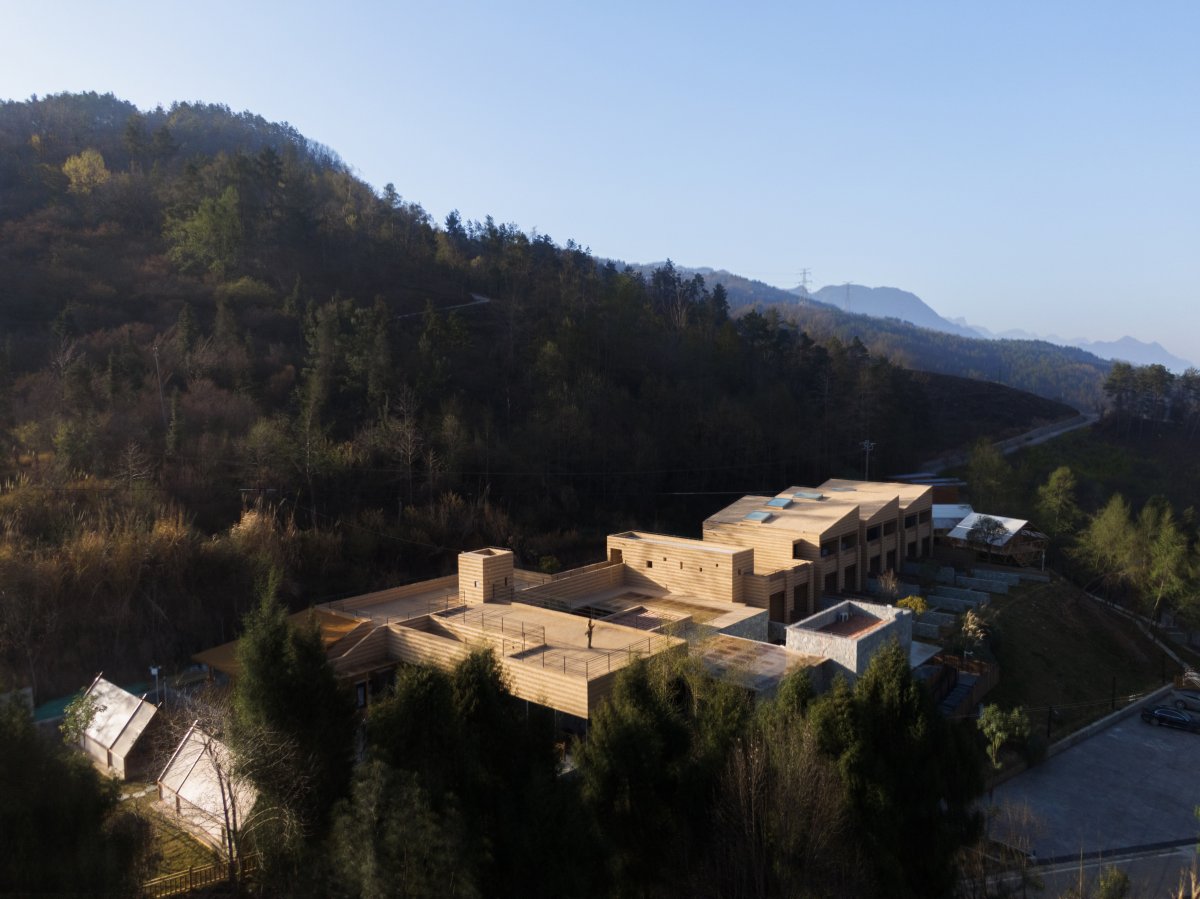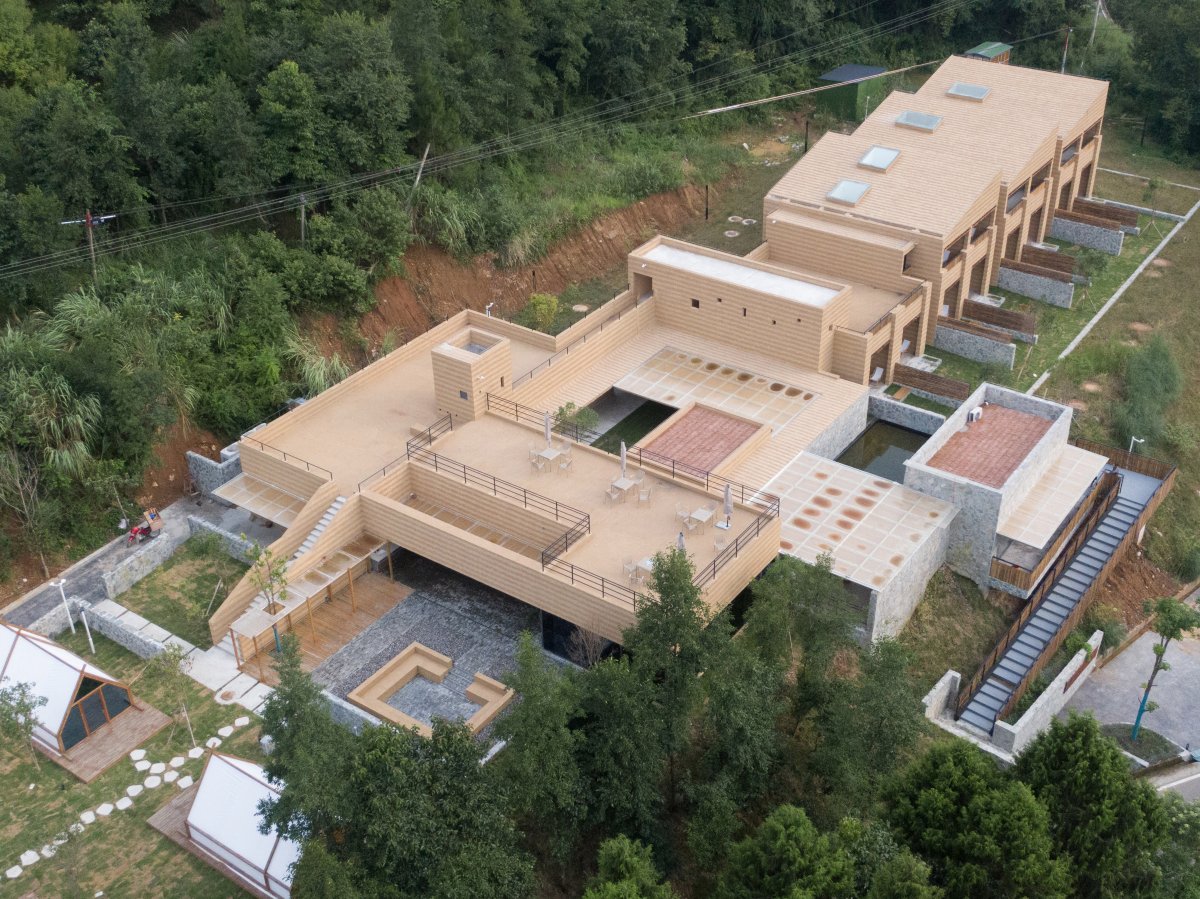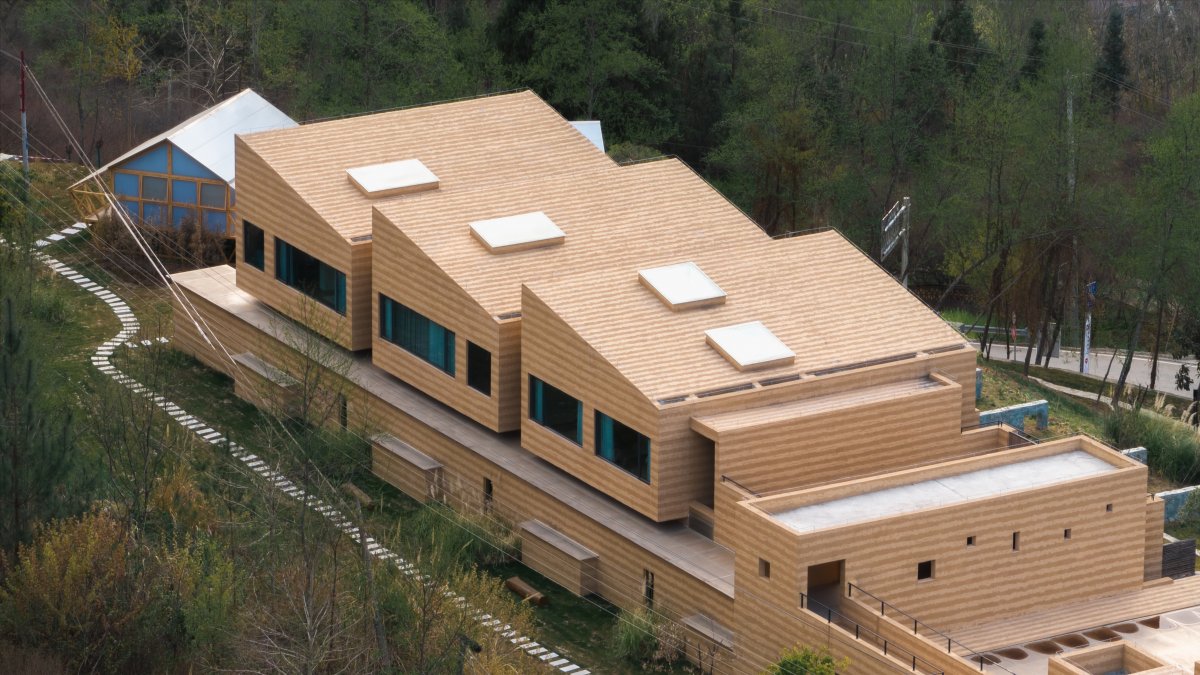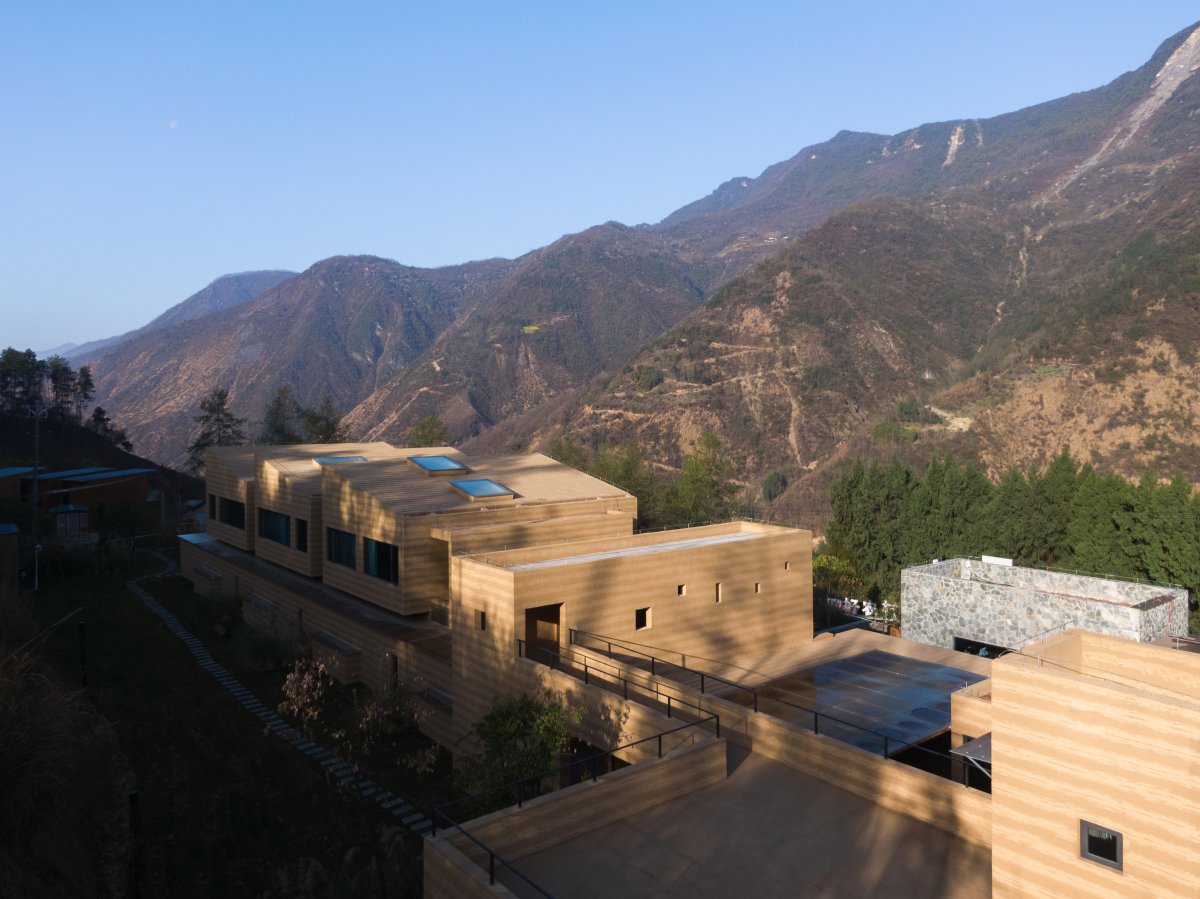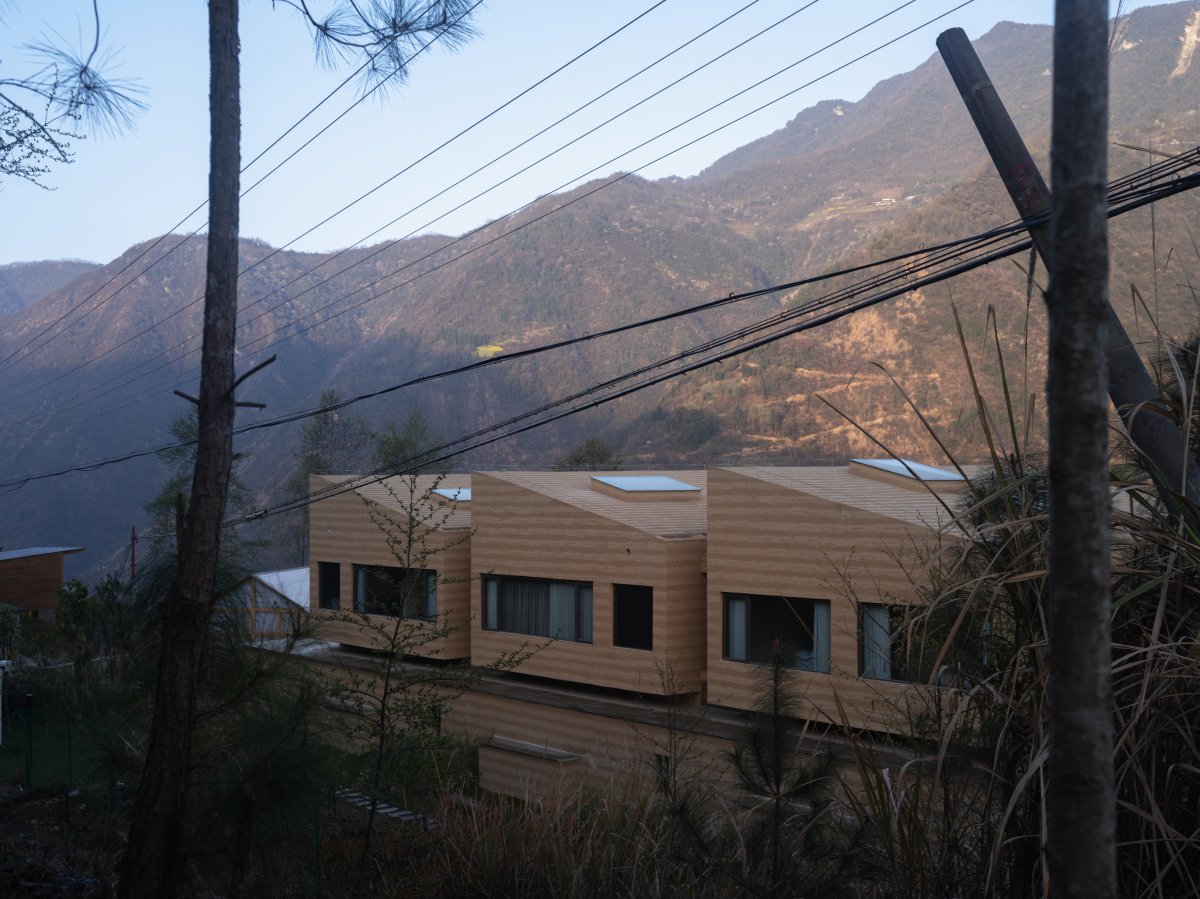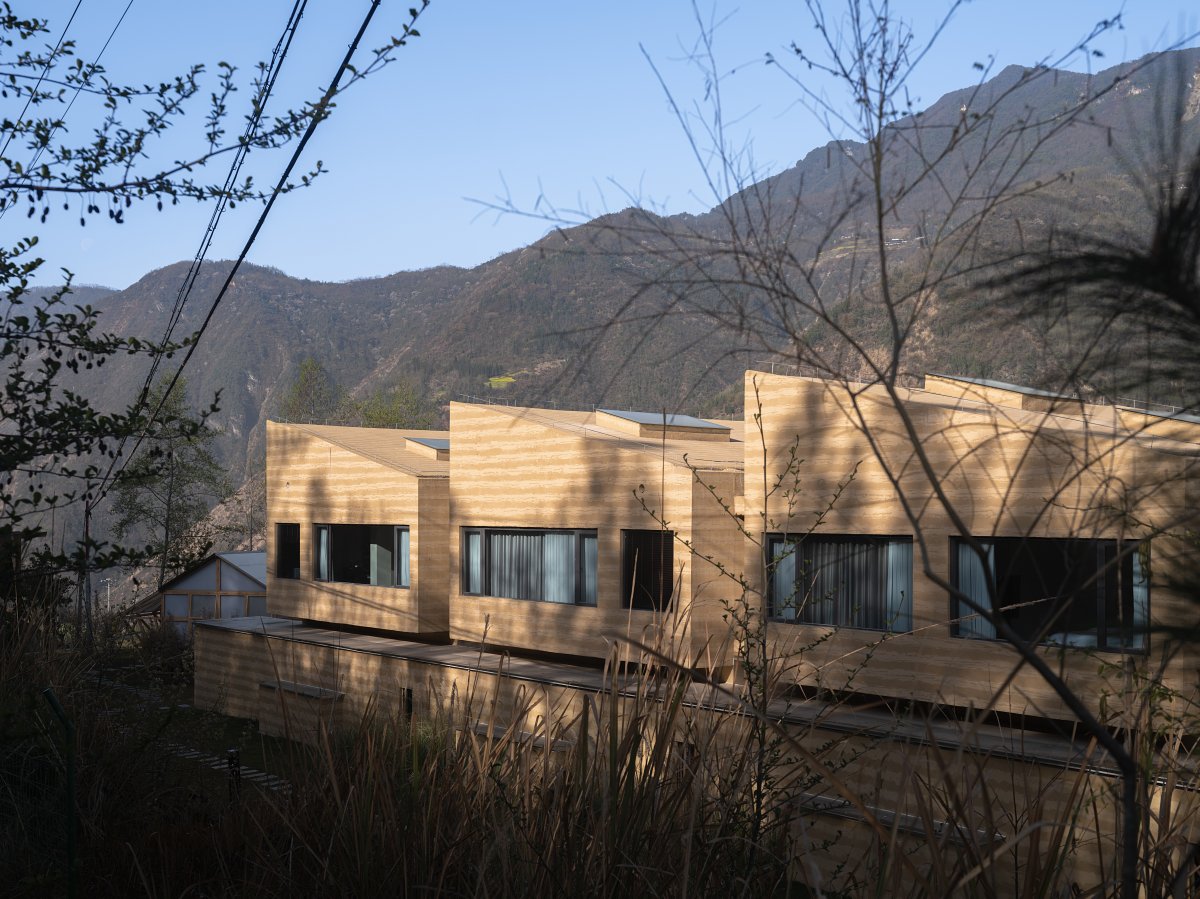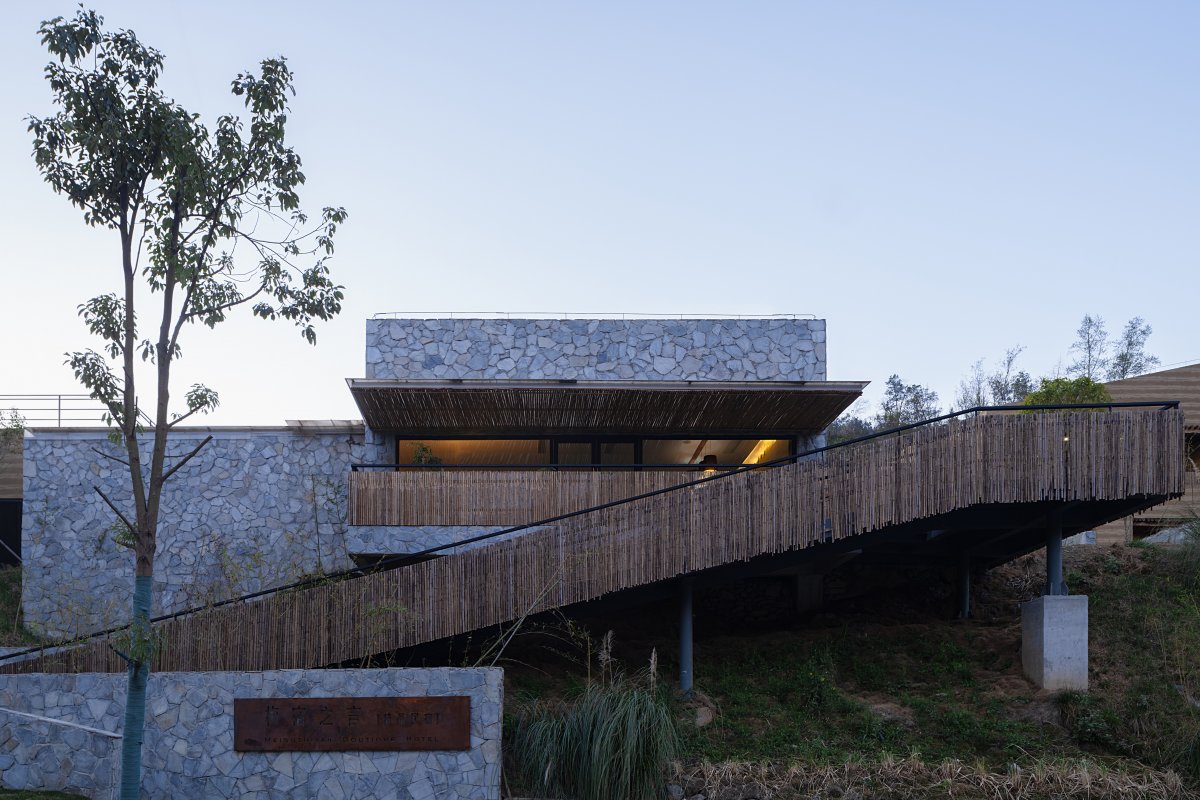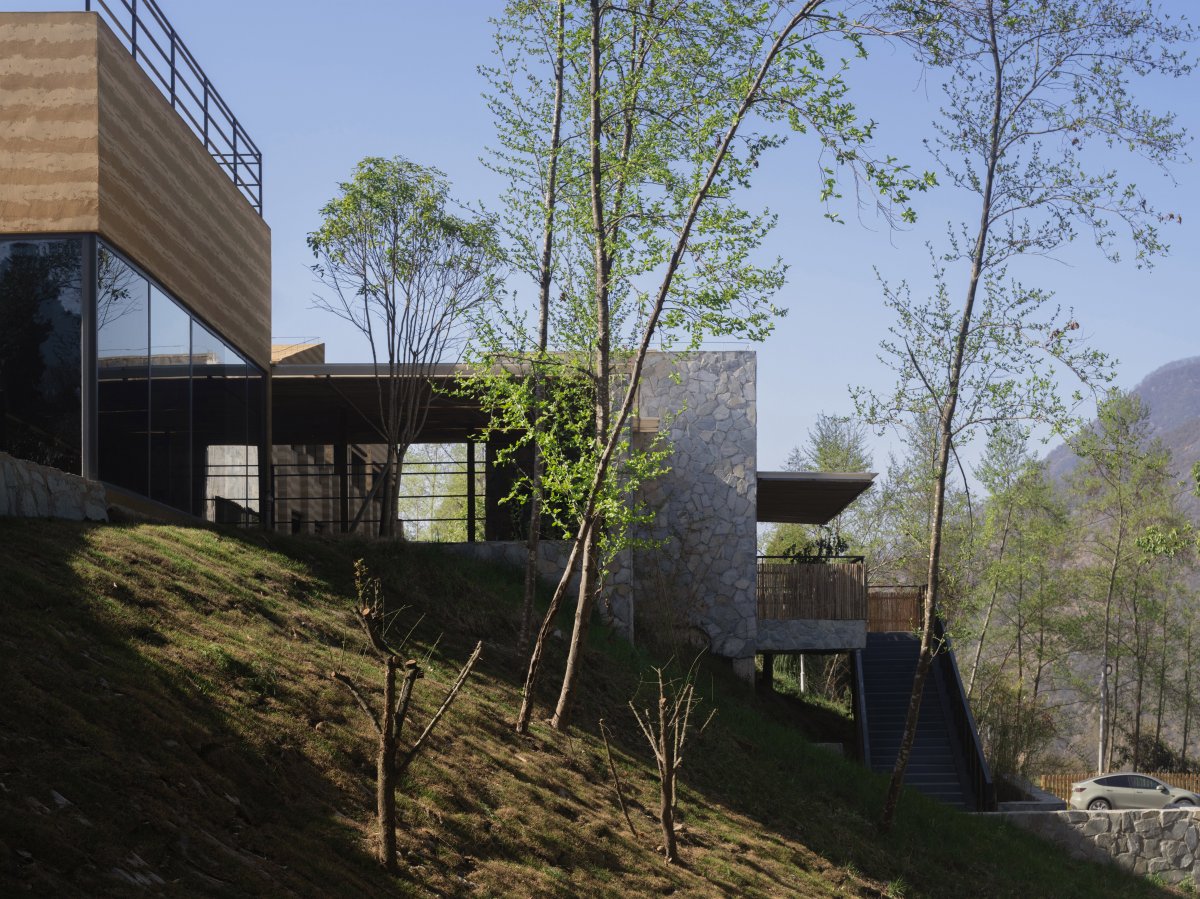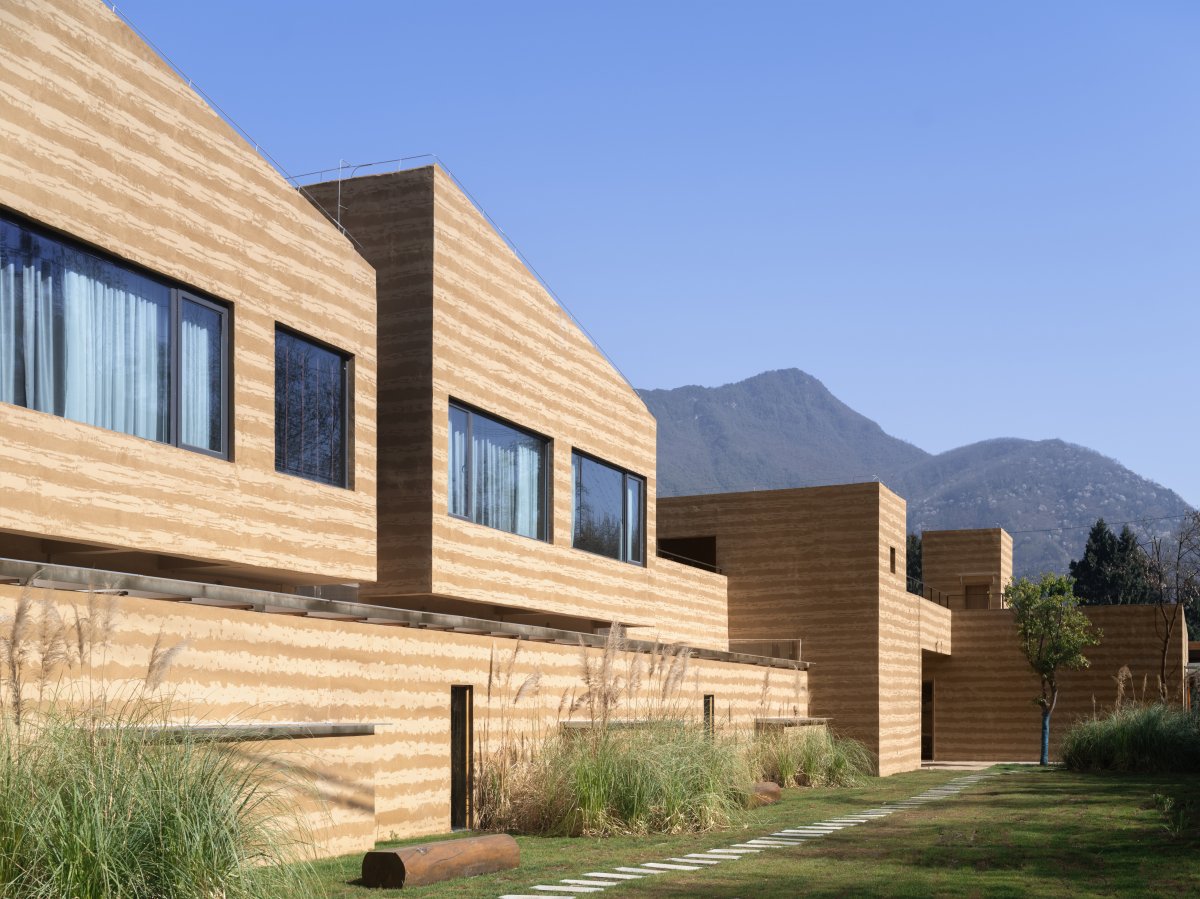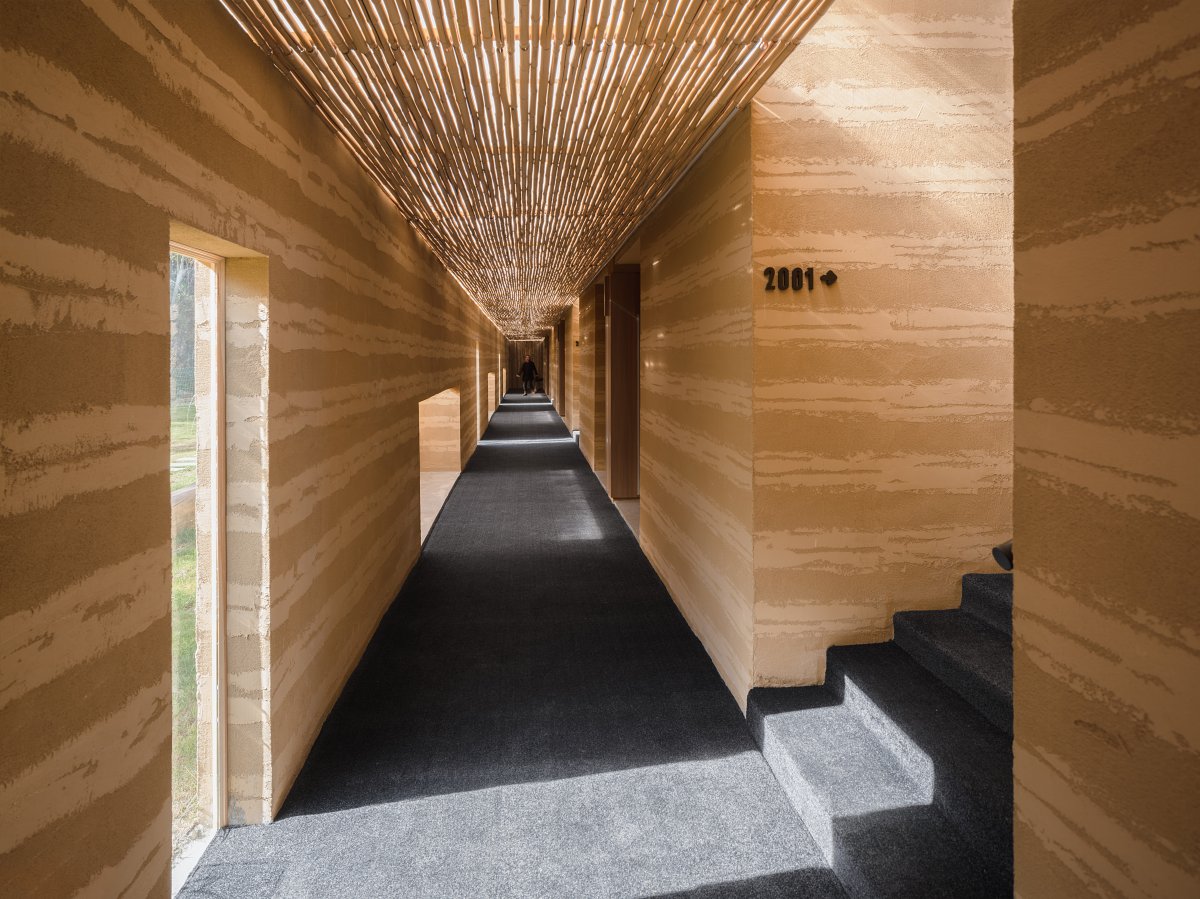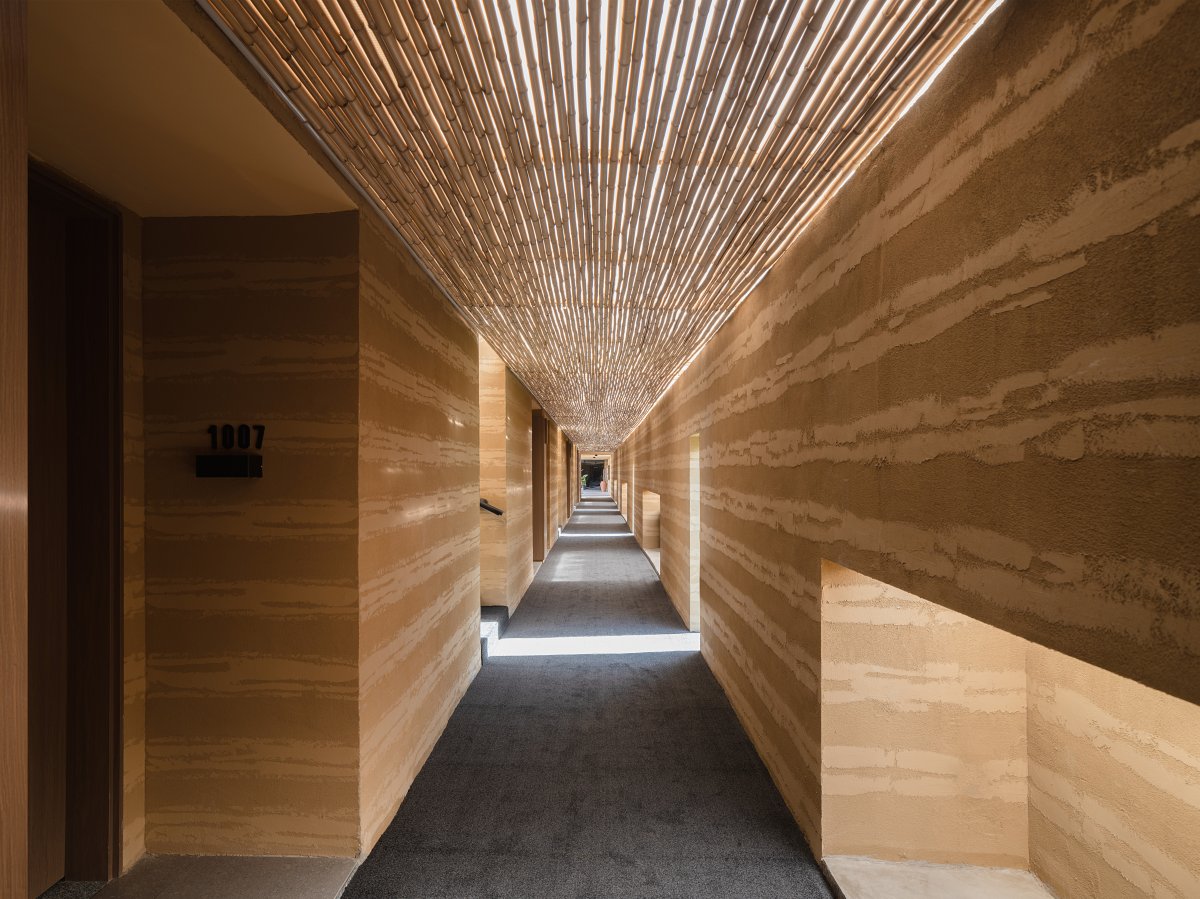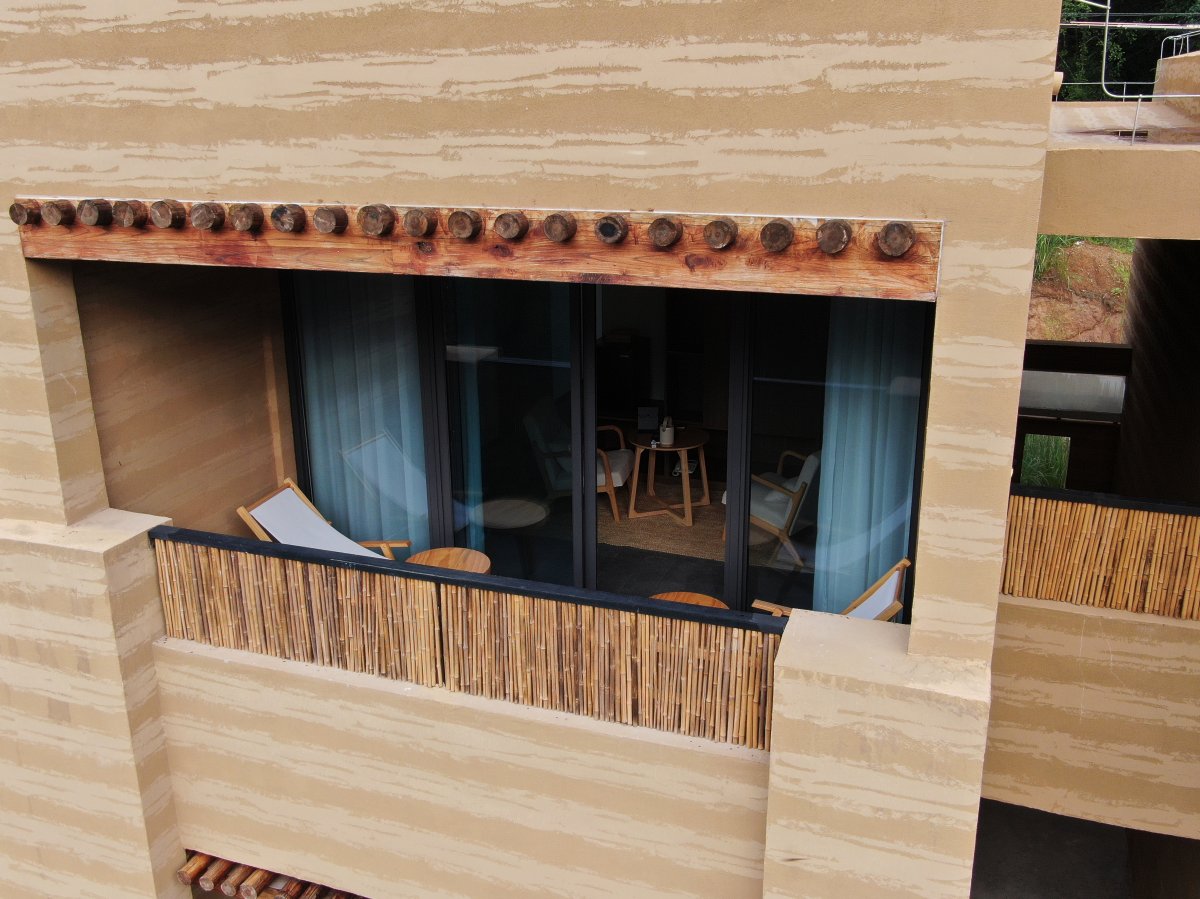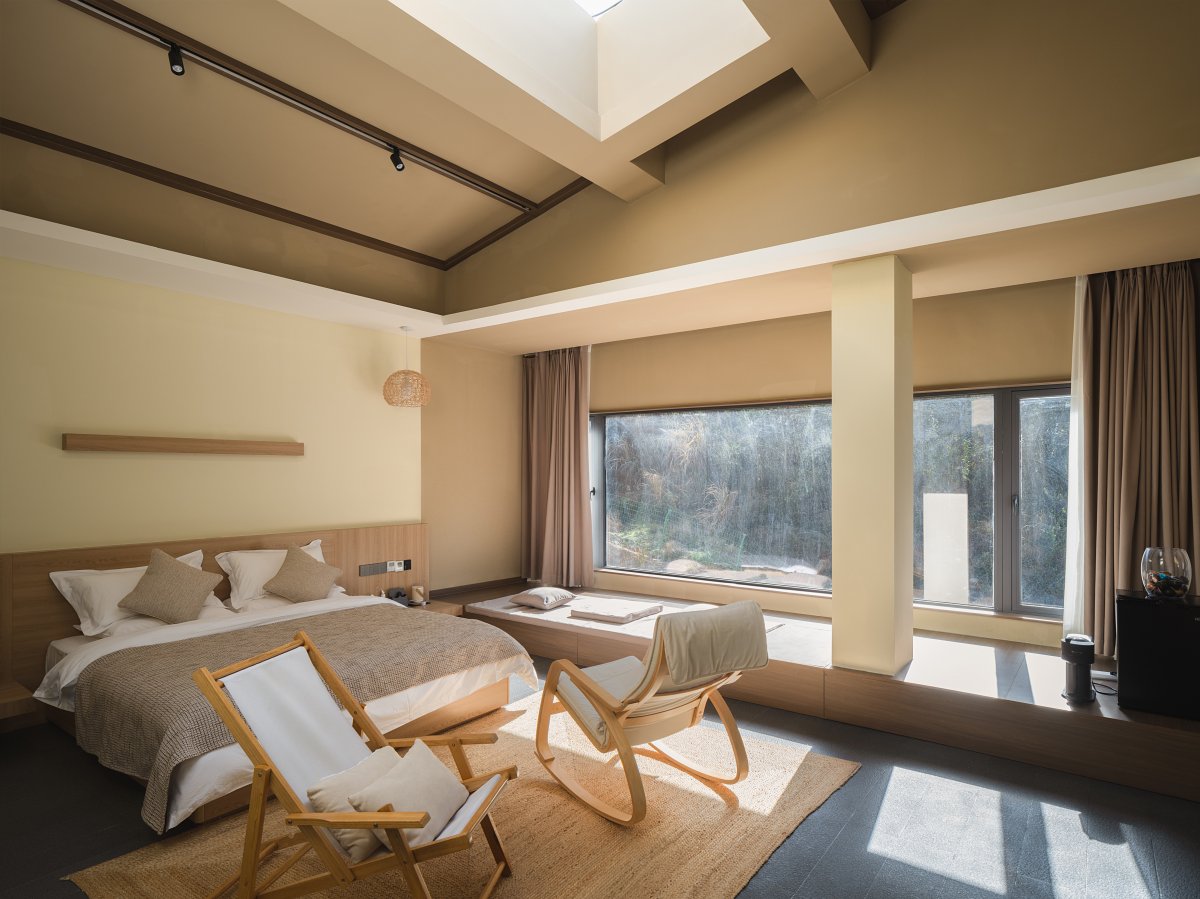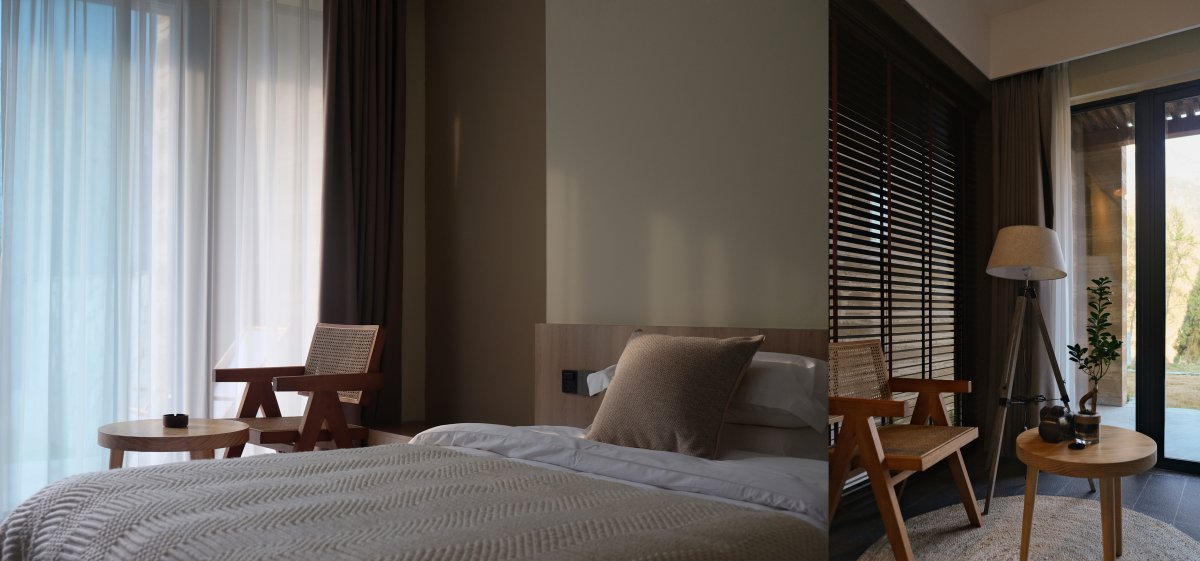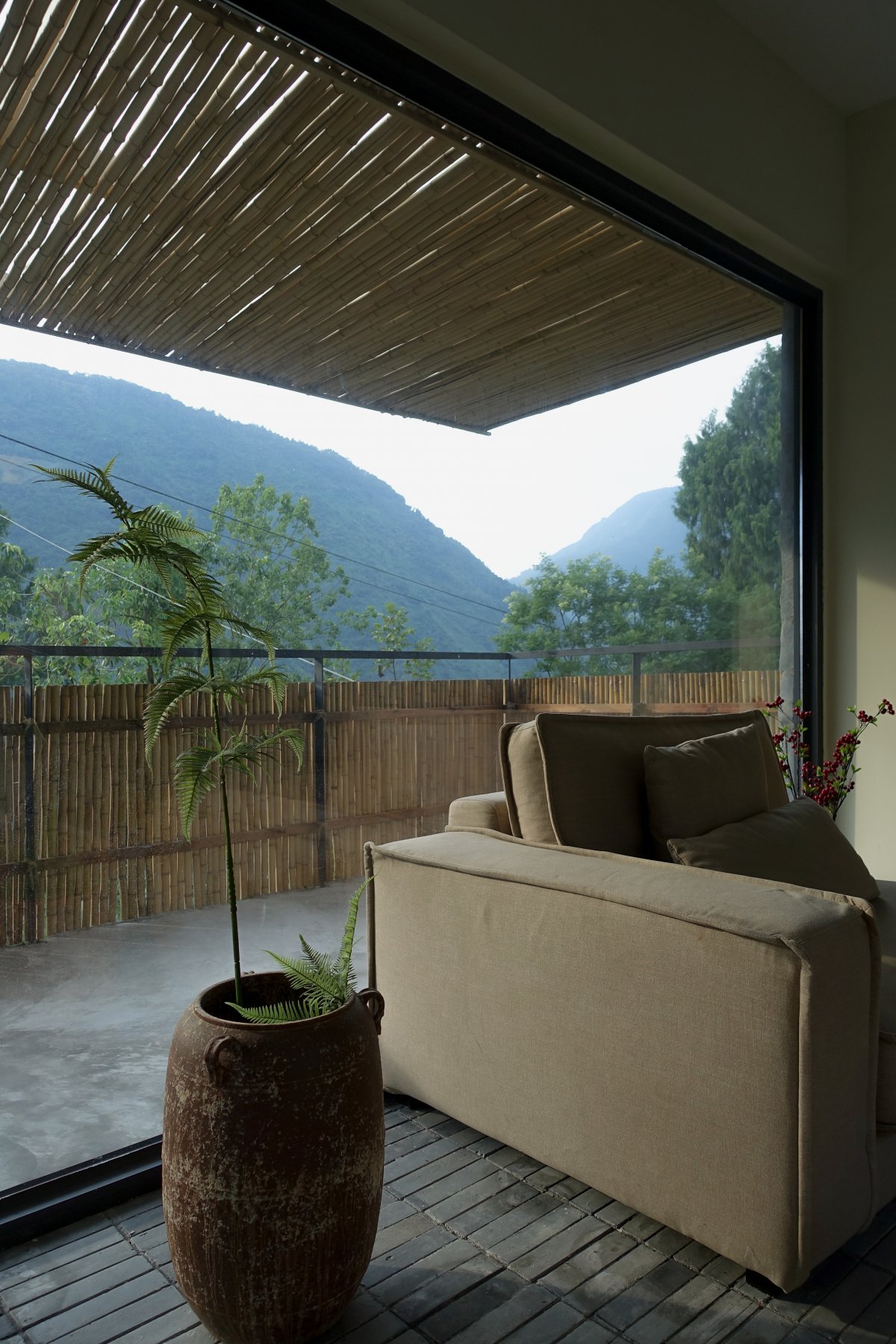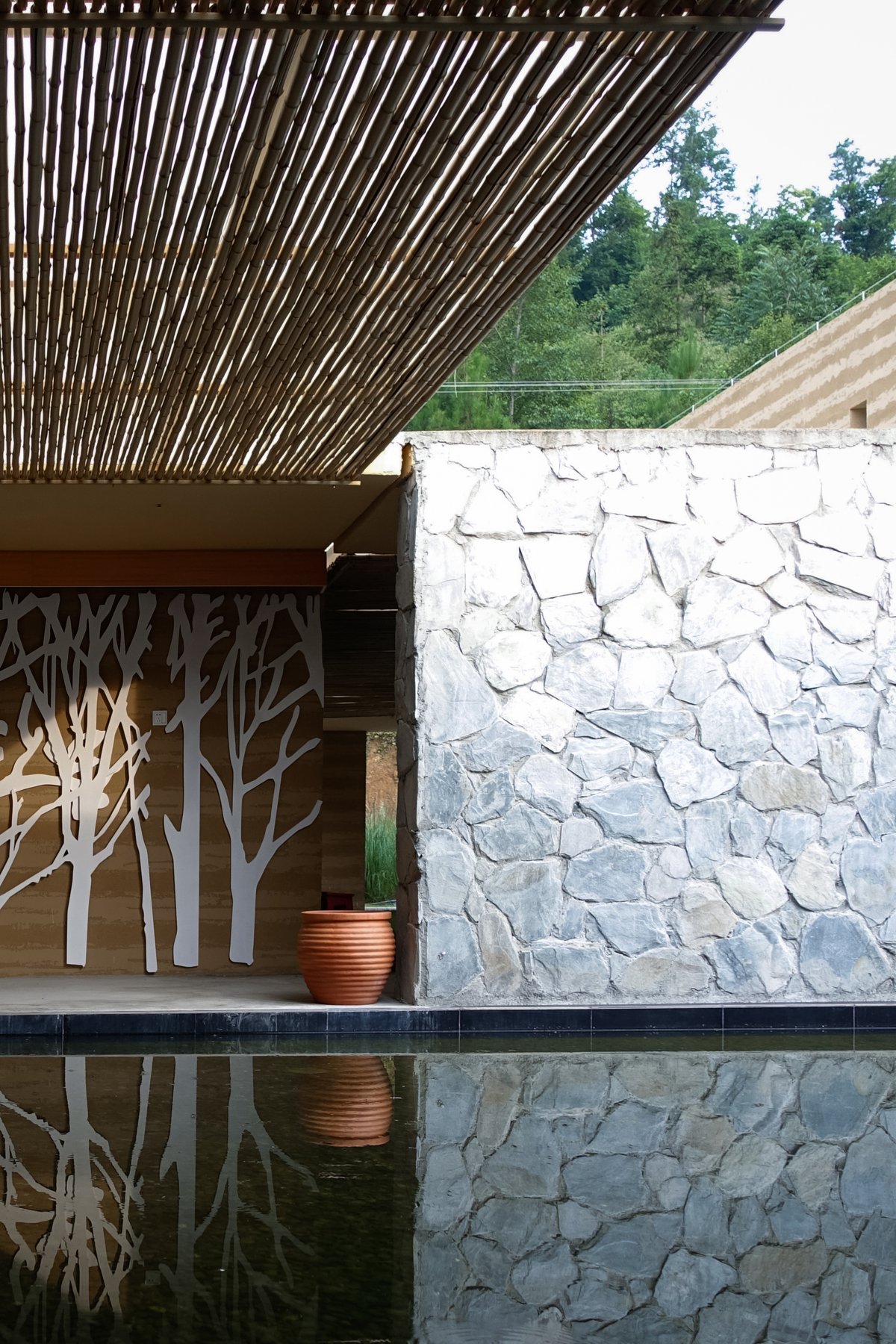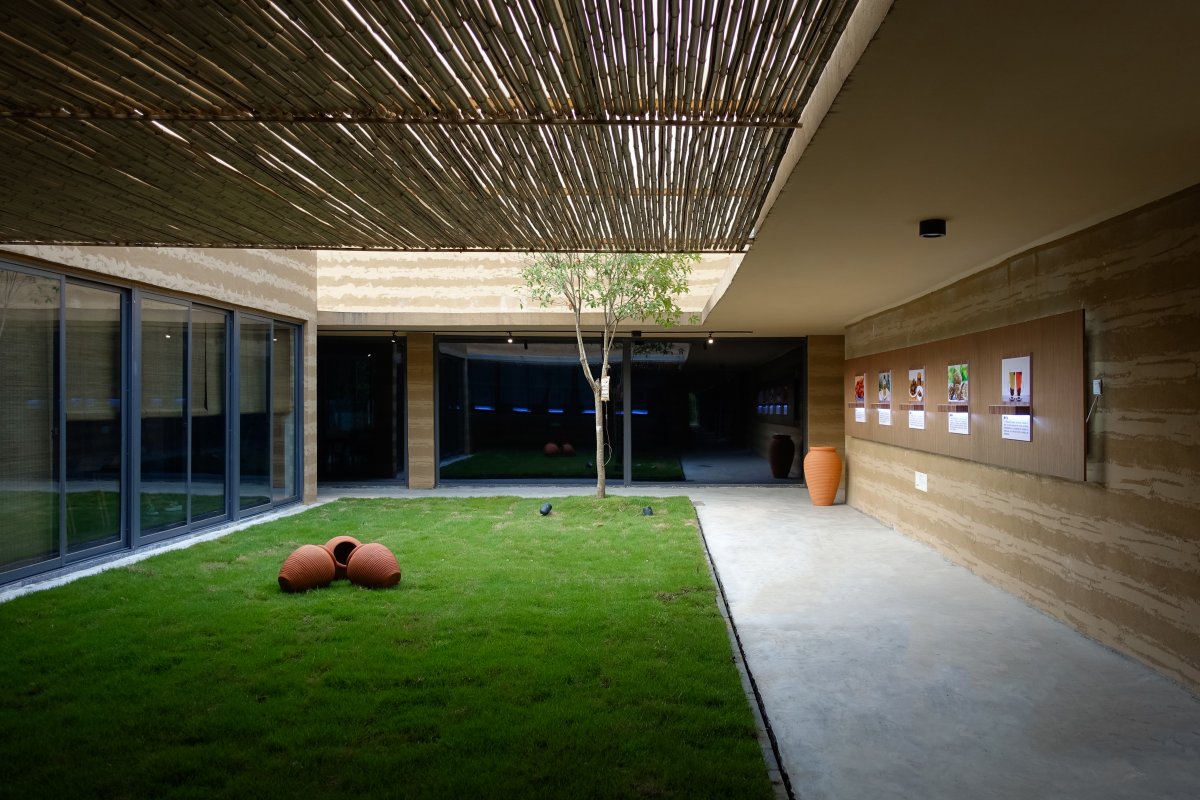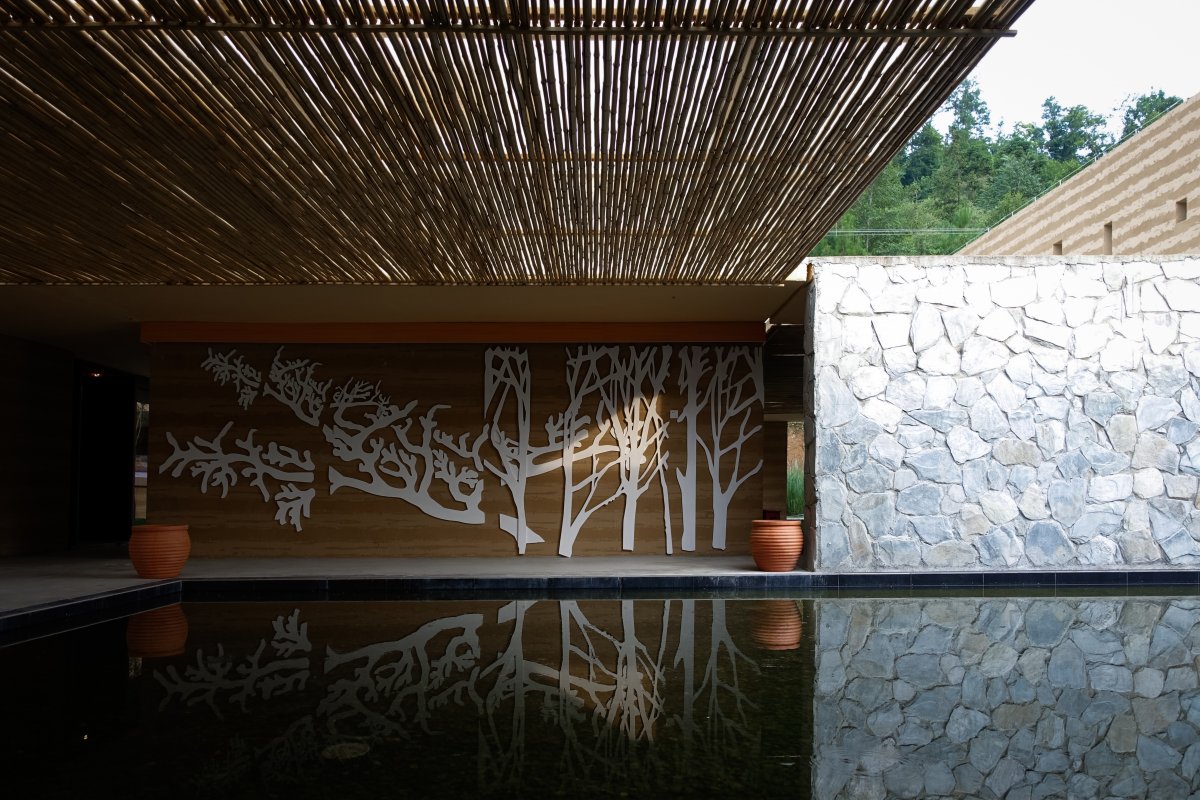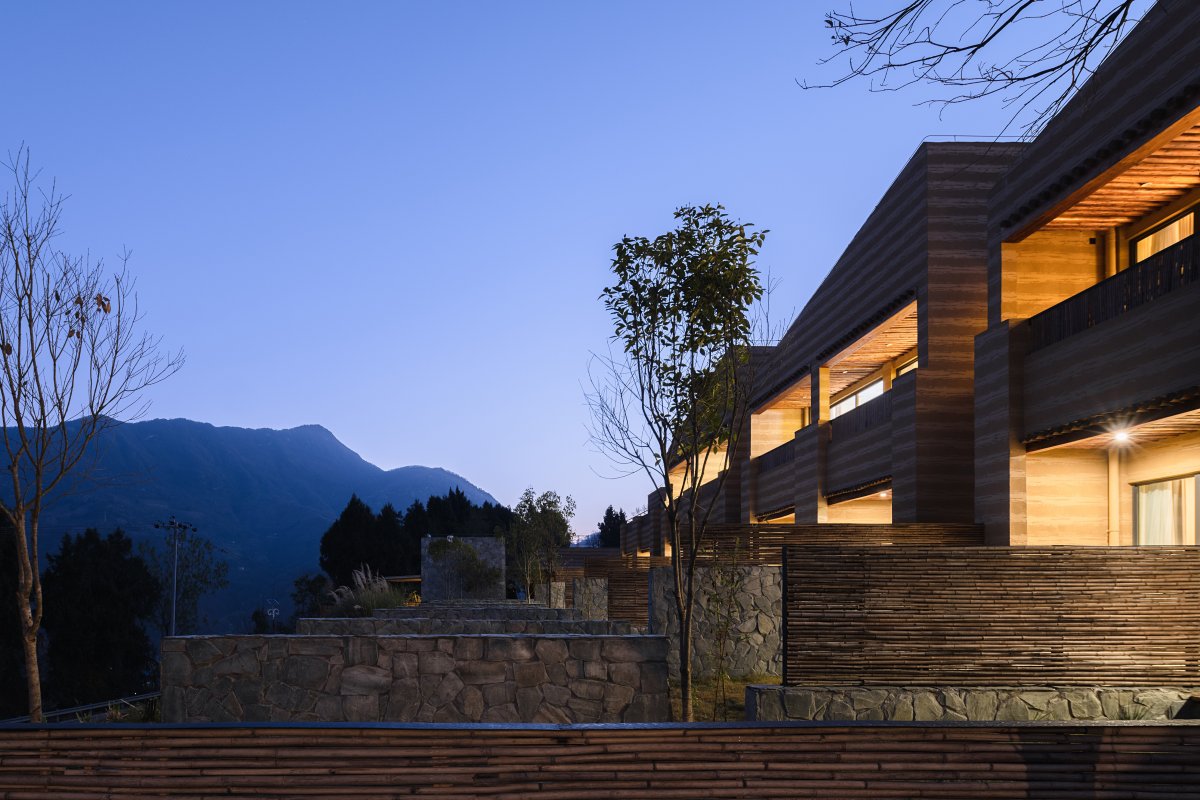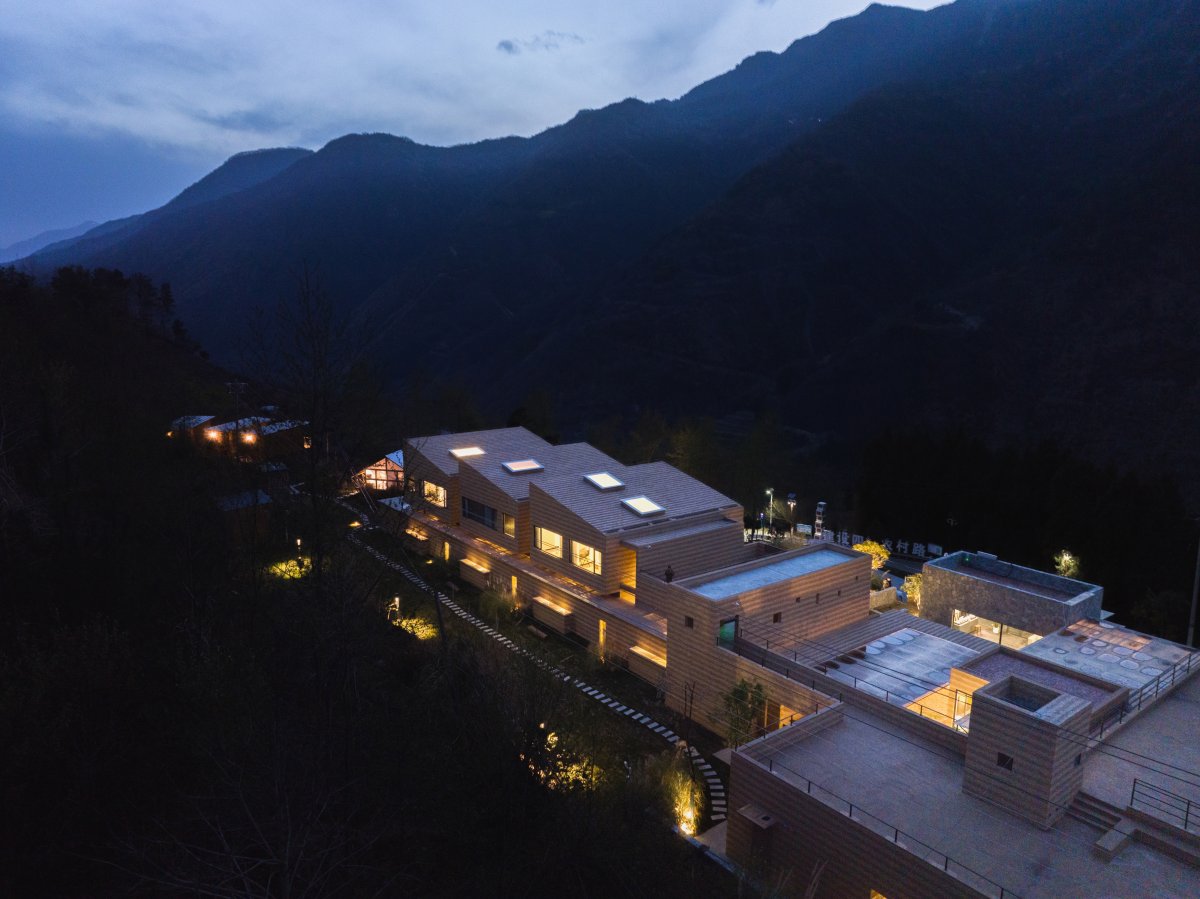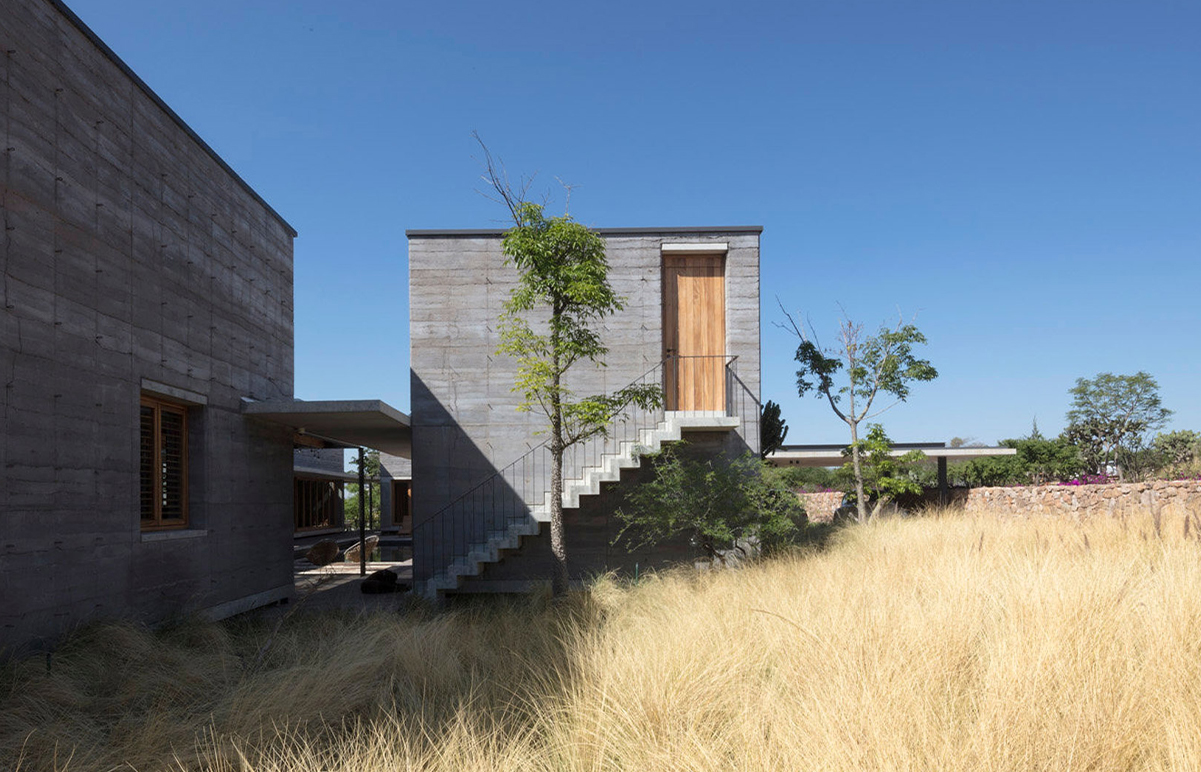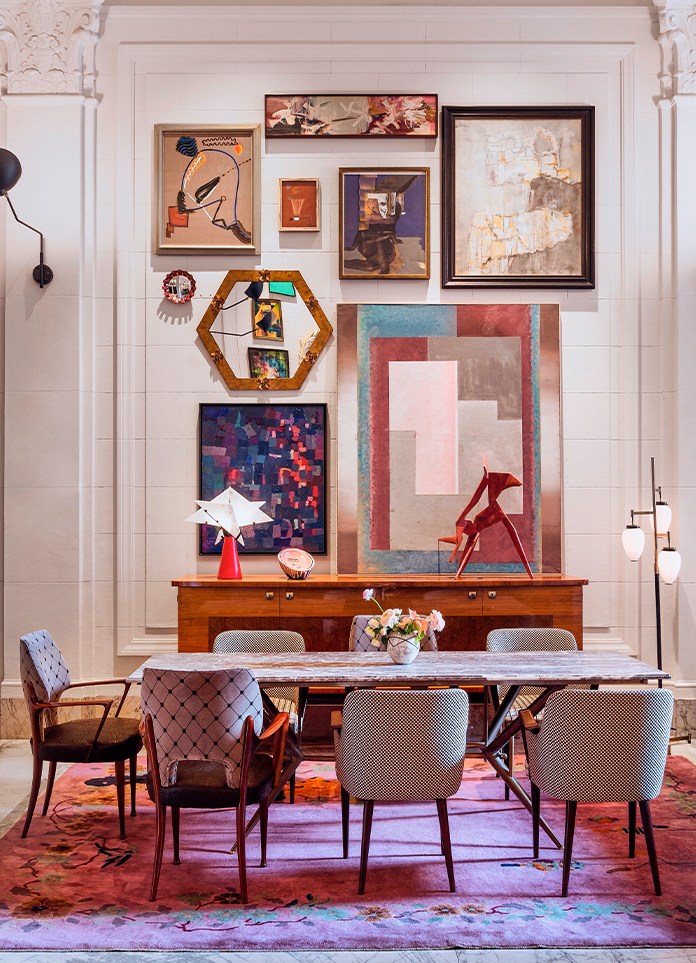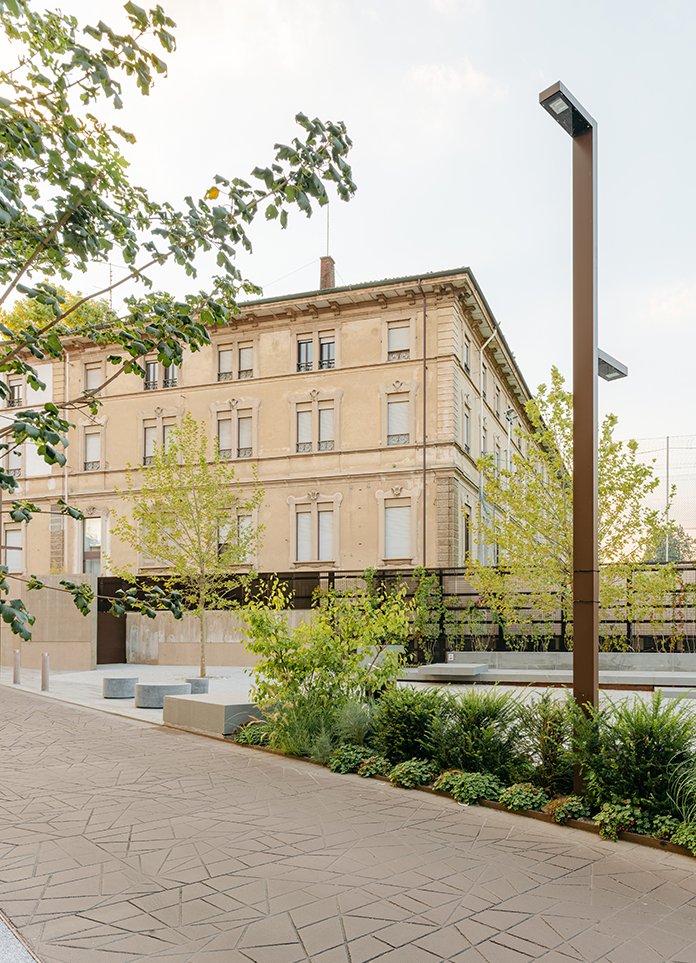
The project is located in Impression Meilin Scenic Area, Pingtong Qiang Ethnic Township, Pingwu County, Sichuan Province, China, about 4 kilometers away from the nearest Qiang ethnic settlement called “Zouma Qiang Village”. Green plum is the most representative local industry. Plum Villa is situated in a thousands of acres of plum orchard halfway up the hill, where used to be a dilapidated old brick kiln.
The common features of “square” and “trapezoid” in plum drying hearth and Qiang ethnic dwellings, as well as the light and shadow on the corridor in the old brick kiln, all of them leave us a strong and “unconscious” impression, then become the three most significant “imagery source” in our design for the Plum Villa. The design of Plum Villa attempts to use only the two simplest geometric prototypes, square and trapezoid, combined as the most common geometric “imagery embryo” in daily life – cuboids and quadrangular prism. These geometric forms and different scales correspond to various daily objects, such as utensils, furniture, buildings even urban.Within a 3-meter cubic reference system, the two fundamental geometric elements of cuboids and quadrangular prism are restructured with the structural logic on “drying hearth”, “Qiang watchtower”, and “arched corridor”. By combining the imagery of courtyards and alleyways in Qiang settlements, there are connected courtyards with different sizes throughout the building, corridors with beautiful light and shadow, and a strong sense of order and geometric forms in the final presentation of the design.
Reception areas, dining spaces, tea rooms, and bars are interconnected through water courtyards and light-filled courtyards, creating a dynamic spatial hierarchy and an atmosphere for fun and leisure. The guest rooms, organized in “drying hearth” modular units, are separated by sets of semi-outdoor stairs and connected through “arched corridors”. These reinforce the sense of geometric order also provide unique corridor views. The flat roof extends the traditional Qiang habitude of using rooftops for leisure, offering a public platform for surrounded magnificent scenery.
The landscape of western Sichuan is known for its magnificent mountains and rivers, vast sky local culture and customs. To bring more scenery into the building, the traditional small windows on Qiang residences are replaced with floor-to-ceiling glass doors and Windows, we expect to give more space back to nature rather than artificial decoration. The building materials come from stone flakes and yellow soil commonly used by local. Due to strict construction cost, the stone flake walls are replaced by rough stone veneer, and the yellow mud walls are replaced by imitation rammed earth paint. Some wooden frame in the corridors and balconies are also inspired by the unique wooden structures in local buildings.
The Plum Villa takes the two simplest geometric prototypes, square and trapezoid, from traditional Qiang dwellings, along with the three commonly used building materials of stone, clay, and wood, reshapes and redefines a building origins from Qiang ethnic dwelling under contemporary context that harmonizes with nature. Through a concise geometric language, it expresses the imagery of ancient Qiang dwellings.
- Architect: Archermit
- Photos: Archermit Arch-Exist
- Words: Youcan Pan Xiangxin Ge Ye Yang
